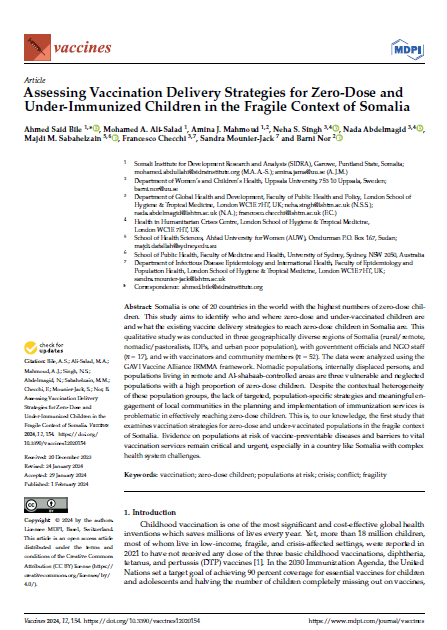This Paper was originally published on www.frontiersin.org
Amidst the ever-expanding debates in various academic and policy fields around migrant and refugee integration and local integration, we bring these two concepts in conversation with one another. Until very recently, theories of integration have had a state-centric focus in the Global North. This article expands and complicates this literature to focus on displaced Somalis within Somalia and its borderlands living in the cities of Kismayo and Garowe using mixed qualitative and quantitative methods in five displacement settlements. Toward this end, we use the often- engaged term “domains of integration” to frame integration. In our conceptualization, however, we incorporate the concept of “local integration” as a durable solution. In brief, we see the domains of integration as a productive concept in the Somali context. However, in Somalia, where clans are interwoven into the state, which lacks resources and power, clan affiliation represents social connections domains, yet also influences the state’s role in the foundational domain of rights and citizenship and makers and means (employment, housing, education, health). International donors and NGOs, as well as international capitalist urban expansion also have a large role in these processes. As such, we argue that the ten domains of integration (discussed in detail below) intersect and blur to an even greater extent than in European and North American contexts, particularly around crucial issues such as housing, land, and property; a key factor in people’s decisions to remain or leave.


